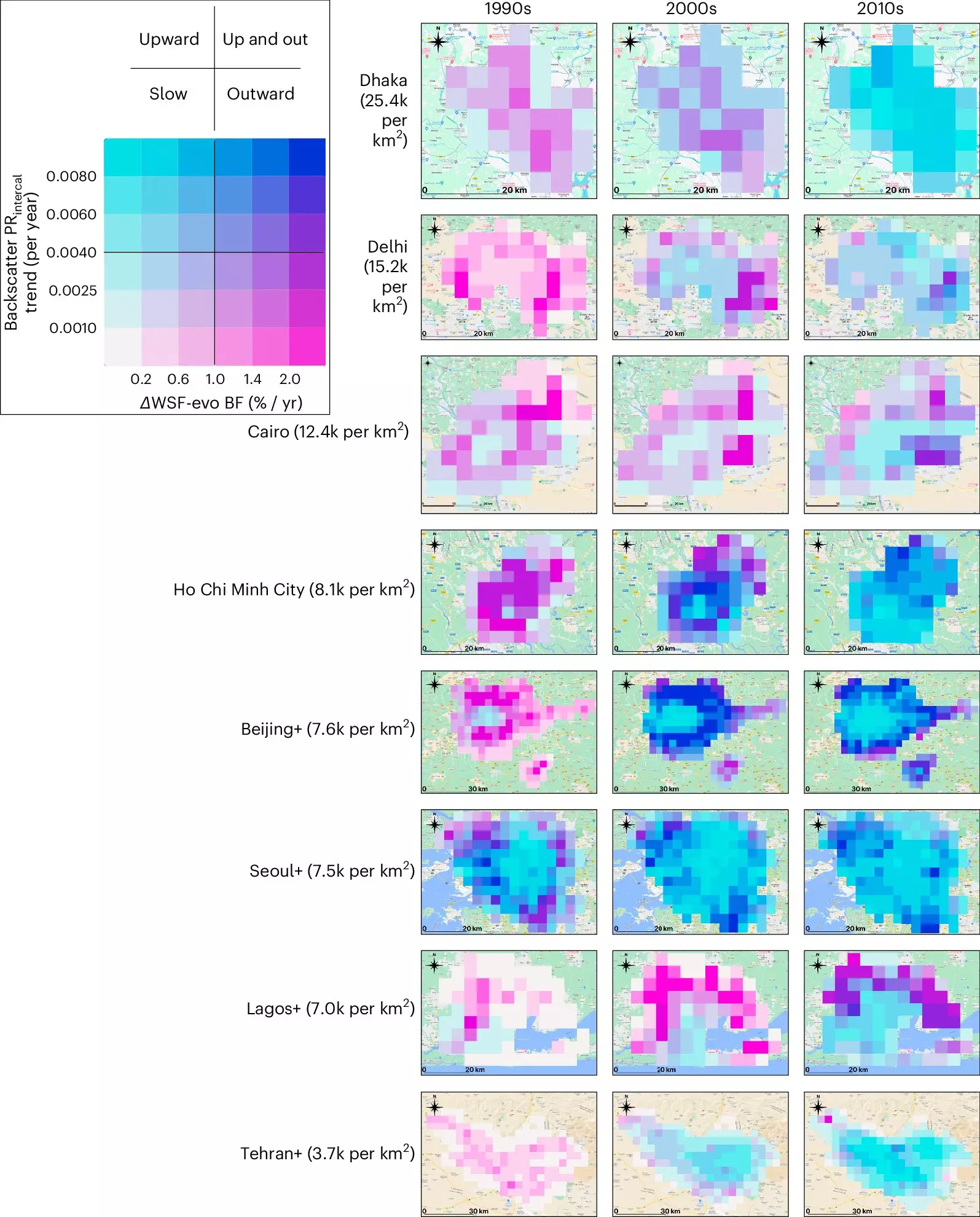Urbanization has been a key trend in recent decades, with more and more people moving from rural areas to cities. With projections indicating that a significant portion of the global population will reside in urban areas by 2030, it is crucial to understand how cities are evolving. A recent study published in the journal Nature Cities has shed light on a fascinating shift in urban development – cities are growing more vertically than horizontally.
A team of Earth scientists, environmental engineers, and geomaticists conducted a comprehensive analysis of satellite data from over 1,500 cities worldwide. The researchers compared two types of satellite data to track the growth patterns of these cities from the 1990s to the 2010s. One type of data focused on the two-dimensional footprint of cities, while the other utilized microwaves to measure growth in three dimensions, accounting for vertical expansion through the construction of skyscrapers.
The results of the study indicated a significant shift towards vertical urbanization. While cities traditionally expanded outward as new buildings were erected, modern cities are increasingly growing upwards. This trend aligns with economic development, as taller buildings signify progress and innovation. The researchers observed that most cities exhibited a transition from outward growth to upward growth, with the latter dominating on average.
Despite the overarching trend of vertical urbanization, the study identified regional disparities. Cities in Africa, China, and Southeast Asia continued to experience rapid outward growth, outpacing their vertical expansion. This highlights the diverse nature of urban development trends and the need for tailored approaches in different regions. Urban planners can leverage these findings to anticipate future growth patterns and optimize resource allocation and distribution accordingly.
As the world becomes increasingly urbanized, understanding the dynamics of city growth is essential for sustainable development. Future research should delve deeper into the factors driving vertical urbanization and explore how cities can effectively balance vertical and horizontal expansion. By leveraging innovative technologies and data-driven insights, urban planners can create more efficient and resilient cities that meet the evolving needs of their residents. The era of vertical urbanization presents both challenges and opportunities, and proactive planning is key to maximizing its benefits.


Leave a Reply